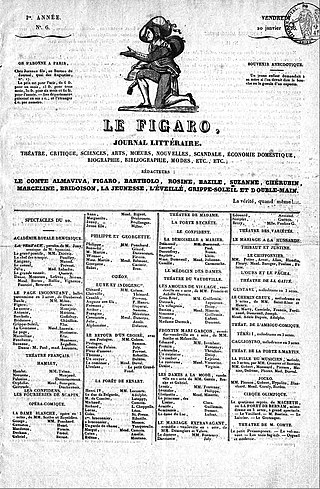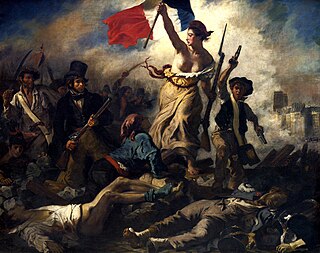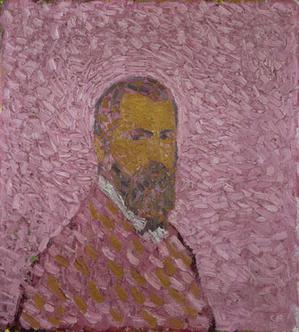| |||||
| Decades: | |||||
|---|---|---|---|---|---|
| See also: | |||||
The following is a list of events, births, and deaths in 1853 in Switzerland .
| |||||
| Decades: | |||||
|---|---|---|---|---|---|
| See also: | |||||
The following is a list of events, births, and deaths in 1853 in Switzerland .

1791 (MDCCXCI) was a common year starting on Saturday of the Gregorian calendar and a common year starting on Wednesday of the Julian calendar, the 1791st year of the Common Era (CE) and Anno Domini (AD) designations, the 791st year of the 2nd millennium, the 91st year of the 18th century, and the 2nd year of the 1790s decade. As of the start of 1791, the Gregorian calendar was 11 days ahead of the Julian calendar, which remained in localized use until 1923.

1826 (MDCCCXXVI) was a common year starting on Sunday of the Gregorian calendar and a common year starting on Friday of the Julian calendar, the 1826th year of the Common Era (CE) and Anno Domini (AD) designations, the 826th year of the 2nd millennium, the 26th year of the 19th century, and the 7th year of the 1820s decade. As of the start of 1826, the Gregorian calendar was 12 days ahead of the Julian calendar, which remained in localized use until 1923.

1807 (MDCCCVII) was a common year starting on Thursday of the Gregorian calendar and a common year starting on Tuesday of the Julian calendar, the 1807th year of the Common Era (CE) and Anno Domini (AD) designations, the 807th year of the 2nd millennium, the 7th year of the 19th century, and the 8th year of the 1800s decade. As of the start of 1807, the Gregorian calendar was 12 days ahead of the Julian calendar, which remained in localized use until 1923.
1875 (MDCCCLXXV) was a common year starting on Friday of the Gregorian calendar and a common year starting on Wednesday of the Julian calendar, the 1875th year of the Common Era (CE) and Anno Domini (AD) designations, the 875th year of the 2nd millennium, the 75th year of the 19th century, and the 6th year of the 1870s decade. As of the start of 1875, the Gregorian calendar was 12 days ahead of the Julian calendar, which remained in localized use until 1923.

1636 (MDCXXXVI) was a leap year starting on Tuesday of the Gregorian calendar and a leap year starting on Friday of the Julian calendar, the 1636th year of the Common Era (CE) and Anno Domini (AD) designations, the 636th year of the 2nd millennium, the 36th year of the 17th century, and the 7th year of the 1630s decade. As of the start of 1636, the Gregorian calendar was 10 days ahead of the Julian calendar, which remained in localized use until 1923.
1853 (MDCCCLIII) was a common year starting on Saturday of the Gregorian calendar and a common year starting on Thursday of the Julian calendar, the 1853rd year of the Common Era (CE) and Anno Domini (AD) designations, the 853rd year of the 2nd millennium, the 53rd year of the 19th century, and the 4th year of the 1850s decade. As of the start of 1853, the Gregorian calendar was 12 days ahead of the Julian calendar, which remained in localized use until 1923.

1830 (MDCCCXXX) was a common year starting on Friday of the Gregorian calendar and a common year starting on Wednesday of the Julian calendar, the 1830th year of the Common Era (CE) and Anno Domini (AD) designations, the 830th year of the 2nd millennium, the 30th year of the 19th century, and the 1st year of the 1830s decade. As of the start of 1830, the Gregorian calendar was 12 days ahead of the Julian calendar, which remained in localized use until 1923.

1637 (MDCXXXVII) was a common year starting on Thursday of the Gregorian calendar and a common year starting on Sunday of the Julian calendar, the 1637th year of the Common Era (CE) and Anno Domini (AD) designations, the 637th year of the 2nd millennium, the 37th year of the 17th century, and the 8th year of the 1630s decade. As of the start of 1637, the Gregorian calendar was 10 days ahead of the Julian calendar, which remained in localized use until 1923.

1836 (MDCCCXXXVI) was a leap year starting on Friday of the Gregorian calendar and a leap year starting on Wednesday of the Julian calendar, the 1836th year of the Common Era (CE) and Anno Domini (AD) designations, the 836th year of the 2nd millennium, the 36th year of the 19th century, and the 7th year of the 1830s decade. As of the start of 1836, the Gregorian calendar was 12 days ahead of the Julian calendar, which remained in localized use until 1923.

1825 (MDCCCXXV) was a common year starting on Saturday of the Gregorian calendar and a common year starting on Thursday of the Julian calendar, the 1825th year of the Common Era (CE) and Anno Domini (AD) designations, the 825th year of the 2nd millennium, the 25th year of the 19th century, and the 6th year of the 1820s decade. As of the start of 1825, the Gregorian calendar was 12 days ahead of the Julian calendar, which remained in localized use until 1923.

1817 (MDCCCXVII) was a common year starting on Wednesday of the Gregorian calendar and a common year starting on Monday of the Julian calendar, the 1817th year of the Common Era (CE) and Anno Domini (AD) designations, the 817th year of the 2nd millennium, the 17th year of the 19th century, and the 8th year of the 1810s decade. As of the start of 1817, the Gregorian calendar was 12 days ahead of the Julian calendar, which remained in localized use until 1923.

Year 1515 (MDXV) was a common year starting on Monday of the Julian calendar.
Events from the year 1853 in art.
The year 1890 in art involved some significant events.

Ferdinand Hodler was one of the best-known Swiss painters of the nineteenth century. His early works were portraits, landscapes, and genre paintings in a realistic style. Later, he adopted a personal form of symbolism which he called "parallelism".
Events from the year 1918 in art.
Hodler may refer to:

Cuno Amiet was a Swiss painter, illustrator, graphic artist and sculptor. As the first Swiss painter to give precedence to colour in composition, he was a pioneer of modern art in Switzerland.

The Musée d’Art et d’Histoire is the largest art museum in Geneva, Switzerland.

The Maison Moos, later called the Galerie Moos, was an art gallery and auction house founded in 1906 in Geneva by the art dealer Max Moos. The gallery closed in 1976.